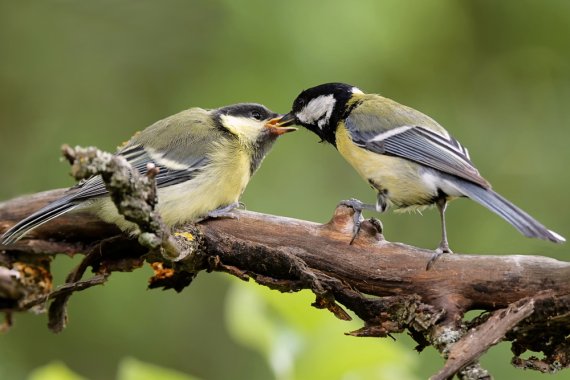‘We see that springs are becoming warmer and oak trees are budding earlier. Caterpillars — an important source of food for young great tits — are also appearing earlier. But great tits are lagging behind, despite the selection pressure to lay eggs earlier,’ says Verhagen, who works at the Netherlands Institute of Ecology (NIOO-KNAW). On 8 November she received her doctorate, which was supervised by Marcel Visser, professor of Ecological Genomics at WUR.
Early or late layers
Some great tits lay their eggs early and others lay their eggs late. Those differences can probably be explained by variation in the physiological mechanisms that drive the egg laying. The brain, liver and ovary all play a role. Verhagen studied these mechanisms by comparing great tits that laid their eggs early with late-laying tits. To do this, the researchers created two different lines of great tits: early layers and late layers, plus their offspring that were selected based on the timing of the egg laying.
Temperature had a direct effect
‘We wanted to know how the ambient temperature affects the different organs,’ explains Verhagen. To do this, the researchers housed the female great tits from the two selection lines in controlled climate conditions for two years. Each great tit experienced one warm breeding season and one cold one. Verhagen discovered that the tits laid their eggs earlier on average during the warmer breeding season. The temperature had a direct effect; the shift in the timing of the egg laying was not due to the availability or otherwise of food.
Genetic adaptations
Verhagen investigated whether variation in the timing could be explained by variation in the activation of certain genes in the brain, liver or ovary. ‘One striking finding was that the liver and ovary play a more significant role than had been thought. That suggests that any genetic adaptations to a rapidly changing environment could also take place in those organs.’
Adapt to climate change
These results bring Verhagen one step closer to solving the mystery surrounding egg-laying. ‘More research is needed before we can predict whether great tits will be able to adapt to climate change. Our experiment does however show that genetic selection to determine when the eggs are laid is possible.’

 Photo: Shutterstock
Photo: Shutterstock